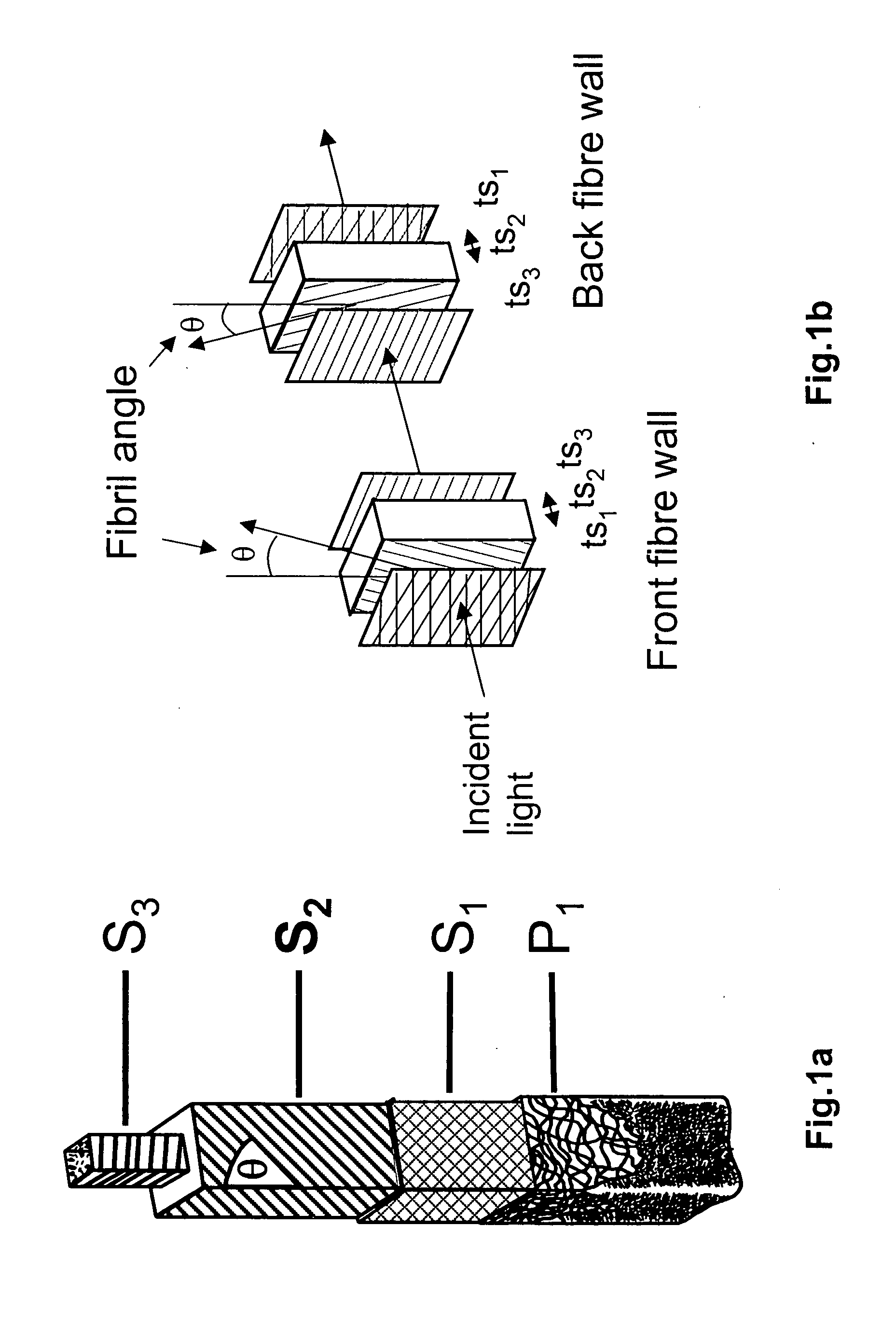Circular polarized light method and device for determining wall thickness and orientations of fibrils of cellulosic fibres
a cellulosic fibre and polarized light technology, applied in the field of polarized light, optical and all related physical properties of birefringent specimens, can solve the problems of difficult fibril angle, many difficulties in direct imaging techniques for accurate measurement of fibre wall thickness
- Summary
- Abstract
- Description
- Claims
- Application Information
AI Technical Summary
Benefits of technology
Problems solved by technology
Method used
Image
Examples
Embodiment Construction
[0020] The method of the invention may be carried out with the circular polarized light in a dark field or a bright field.
[0021] The light source is typically of multiple predetermined and well-defined wavelengths, and the number of predetermined wavelengths is suitably at least the same as the number of parameters, to be determined.
[0022] The method may suitably be employed to determine the relative phase retardations, or the orientations of the optical axes of the specimen, or both.
[0023] The circular polarized light system employed is suitably comprised of a polarizer and an analyzer; both the polarizer and the analyzer may be linear polarizers; and a pair of well-matched achromatic quarter-wave retarders with a working wavelength range covering all predetermined wavelengths of the light source. The optical axes of the retarders are oriented 90° to each other and 45° to the polarizer and the analyzer.
[0024] The apparatus suitably includes, for determining light intensities of...
PUM
 Login to View More
Login to View More Abstract
Description
Claims
Application Information
 Login to View More
Login to View More - R&D
- Intellectual Property
- Life Sciences
- Materials
- Tech Scout
- Unparalleled Data Quality
- Higher Quality Content
- 60% Fewer Hallucinations
Browse by: Latest US Patents, China's latest patents, Technical Efficacy Thesaurus, Application Domain, Technology Topic, Popular Technical Reports.
© 2025 PatSnap. All rights reserved.Legal|Privacy policy|Modern Slavery Act Transparency Statement|Sitemap|About US| Contact US: help@patsnap.com



